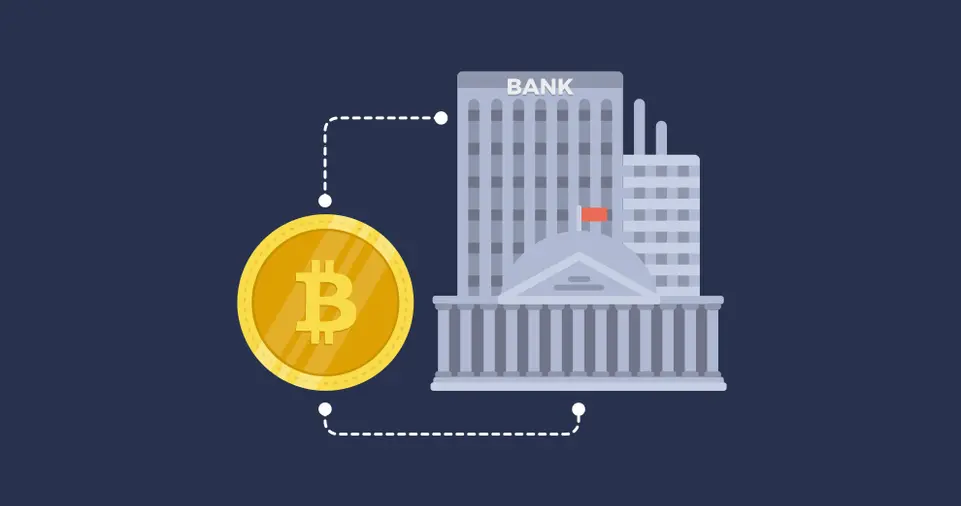Integrating blockchain into traditional financial systems has become a pivotal topic in the modern financial landscape.
Originally developed as the underlying technology for cryptocurrencies like Bitcoin, has rapidly evolved into a transformative tool for industries beyond digital currencies.
Its ability to provide transparency, enhance security, and streamline operations makes it an attractive solution for financial institutions seeking innovation.
With the global financial ecosystem facing challenges such as inefficiencies, high transaction costs, and fraud,it offers a pathway to modernization.
This article explores the step-by-step process of integrating it into traditional financial systems, highlighting the benefits and challenges involved.
From identifying business needs to ensuring regulatory compliance and fostering interoperability, this guide provides actionable insights for institutions aiming to leverage its’s potential.
With detailed explanations and real-world examples, we aim to demystify the integration process, making it accessible to both decision-makers and technical teams.
By embracing it, financial systems can achieve a level of efficiency and reliability that meets the demands of today’s fast-paced digital world.
Understanding Blockchain Technology
What is Blockchain?
Blockchain is a decentralized ledger technology that records transactions across multiple computers in a way that ensures security, transparency, and immutability.
Each transaction is grouped into blocks and linked in chronological order, forming a chain.
This technology operates on consensus mechanisms, eliminating the need for a central authority.
Key characteristics of blockchain include:
- Decentralization: Transactions are verified by a distributed network of nodes.
- Transparency: All participants can access transaction history, fostering trust.
- Immutability: Once recorded, data cannot be altered or deleted.
- Security: Advanced cryptographic techniques protect against fraud and unauthorized access.
Why Integrate Blockchain into Financial Systems?
The financial sector is traditionally plagued by inefficiencies, including slow transaction times, high fees, and vulnerabilities to fraud.
Blockchain addresses these issues by:
- Reducing Costs: Eliminating intermediaries in processes like cross-border payments.
- Enhancing Security: Providing robust protection against data breaches.
- Streamlining Processes: Automating transactions with smart contracts.
- Improving Transparency: Enabling real-time tracking of transactions.
Step 1: Assess Business Needs and Use Cases

Before integrating blockchain, financial institutions must identify areas where it can deliver significant value.
A thorough assessment helps in aligning it capabilities with organizational goals.
Key Use Cases for Blockchain in Finance
Payments and Settlements
Blockchain facilitates faster and cheaper cross-border payments. Traditional systems rely on intermediaries, causing delays and high fees.
With it, transactions are processed in real-time, reducing settlement times from days to seconds.
Fraud Prevention
The immutable nature of blockchain records ensures data integrity, making it nearly impossible for hackers to alter information. This feature is crucial for combating financial fraud.
KYC/AML Compliance
Know Your Customer (KYC) and Anti-Money Laundering (AML) processes are often time-consuming and expensive.
It allows secure sharing of verified customer data across institutions, reducing duplication and costs.
Smart Contracts
Smart contracts automate agreements, executing terms automatically when predefined conditions are met.
They minimize paperwork and eliminate disputes, particularly in trade finance and insurance.
Asset Tokenization
Blockchain enables the tokenization of physical and digital assets, allowing fractional ownership and easier trading.
This innovation can revolutionize real estate, art, and securities markets.
ALSO READ: How to Use Blockchain for Data Privacy and Security
Step 2: Choose the Right Technology
Selecting the appropriate platform is critical for successful integration.
Financial institutions must consider factors such as scalability, security, and compatibility with existing systems.
Types
Public
These are open networks like Bitcoin and Ethereum, where anyone can participate.
They are ideal for applications requiring transparency but may face scalability issues.
Private/Permissioned
Restricted to specific participants, private blockchains offer greater control and security.
Examples include Hyperledger Fabric and R3 Corda, which are tailored for enterprise use cases.
Consortium
A hybrid model managed by a group of organizations. They provide shared control, making them suitable for industry-specific collaborations, such as trade finance consortia.
Factors to Consider
- Transaction Speed: High transaction volumes demand scalable solutions.
- Security Protocols: Choose platforms with strong encryption and robust consensus mechanisms.
- Interoperability: Ensure the blockchain can integrate with legacy systems and other.
Step 3: Develop a Pilot Program
A pilot program allows institutions to test feasibility before full-scale implementation.
This approach minimizes risks and provides valuable insights into potential challenges.
Steps to Create a Pilot Program
- Define Objectives: Clearly outline what the pilot aims to achieve, such as reducing settlement times or improving KYC efficiency.
- Select Use Cases: Focus on a specific process or department for the pilot.
- Build a Prototype: Develop a minimal viable product (MVP) to demonstrate functionality.
- Test and Iterate: Use controlled environments to identify issues and refine the system.
Example
A bank might pilot a blockchain-based system for cross-border payments, testing its ability to reduce transaction costs and improve speed. Results from this trial can guide broader adoption strategies.
Step 4: Ensure Regulatory Compliance

Regulatory compliance is a critical aspect of blockchain integration in finance.
The decentralized nature of it often conflicts with traditional regulatory frameworks, necessitating careful navigation.
Key Considerations
Data Privacy
Ensure compliance with data protection laws like GDPR by anonymizing customer data stored on the blockchain.
KYC and AML Standards
Leverage blockchain’s transparency to enhance compliance with KYC and AML regulations. Shared KYC platforms can streamline processes across institutions.
Cross-Border Transactions
Collaborate with regulators to address legal challenges in cross-border payments, including taxation and currency exchange laws.
Collaboration with Regulators
Engage with regulatory bodies early in the integration process. Transparent communication can help establish guidelines and ensure smooth adoption.
Step 5: Establish Interoperability
Interoperability is essential for integrating blockchain with existing financial systems and others. Without it, blockchain initiatives risk becoming isolated silos.
Strategies for Achieving Interoperability
- APIs and Middleware: Use APIs to enable communication between blockchain and legacy systems. Middleware solutions can simplify integration.
- Interoperable Blockchain Platforms: Choose platforms designed for interoperability, such as Polkadot or Cosmos.
- Standardization: Advocate for industry-wide standards to ensure seamless data exchange.
Step 6: Enhance Security Measures
Security is a cornerstone of blockchain technology, but proper implementation is critical to protect against emerging threats.
Best Practices for Security
- Private Key Management: Use hardware security modules and multi-signature wallets to safeguard private keys.
- Encryption: Employ advanced encryption techniques to ensure data confidentiality.
- Regular Audits: Conduct periodic security audits and penetration testing to identify vulnerabilities.
- Secure Smart Contracts: Use formal verification methods to ensure smart contract code is free from bugs and exploits.
Step 7: Train Teams and Stakeholders

Integration requires a shift in knowledge and operational practices.
Training employees and stakeholders is essential to ensure smooth adoption.
Training Focus Areas
- Basics: Educate teams on how blockchain works and its potential applications.
- Technical Skills: Provide specialized training for IT teams on blockchain development and maintenance.
- Change Management: Help employees adapt to new workflows and processes.
Step 8: Collaborate with Industry Partners
Collaboration can accelerate blockchain adoption by pooling resources and expertise.
Benefits of Collaboration
- Cost Sharing: Reduce infrastructure costs by sharing resources with other institutions.
- Innovation: Co-develop solutions that address shared challenges.
- Standardization: Work together to establish common standards and best practices.
Step 9: Implement Gradually
A phased approach to blockchain adoption minimizes risks and ensures a smoother transition.
Steps for Gradual Implementation
- Start Small: Begin with non-critical functions like record-keeping.
- Expand Gradually: Gradually incorporate blockchain into core operations, such as payments.
- Monitor Progress: Continuously assess performance and make improvements.
ALSO READ: How to Understand and Use NFTs (Non-Fungible Tokens)
Step 10: Monitor and Optimize
Continuous monitoring and optimization are vital to realizing blockchain’s full potential.
Key Actions
- Performance Metrics: Track metrics such as transaction speed, cost savings, and user satisfaction.
- User Feedback: Gather input from stakeholders to identify areas for improvement.
- Iterate: Regularly update and enhance the blockchain system to meet evolving needs.











